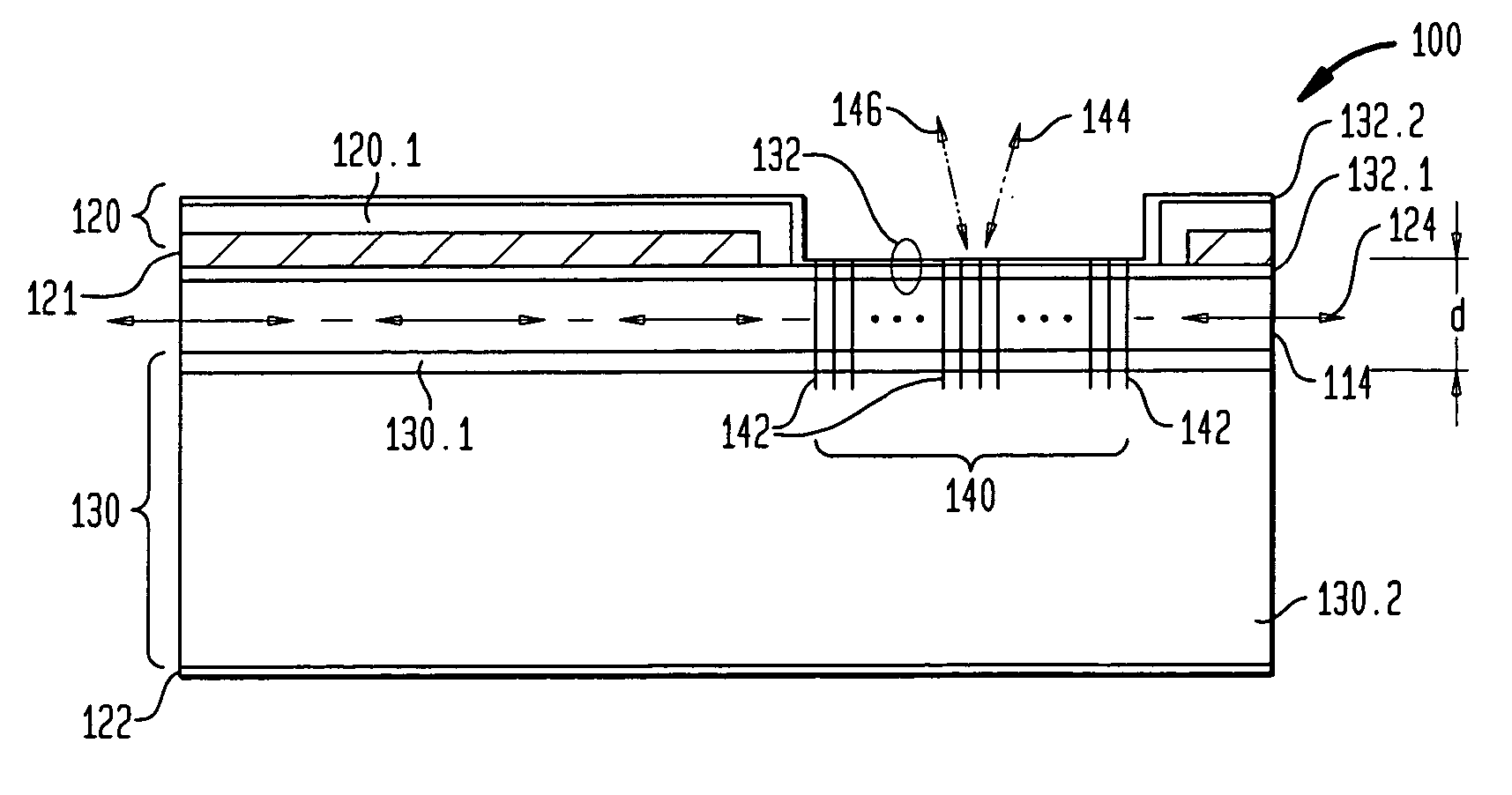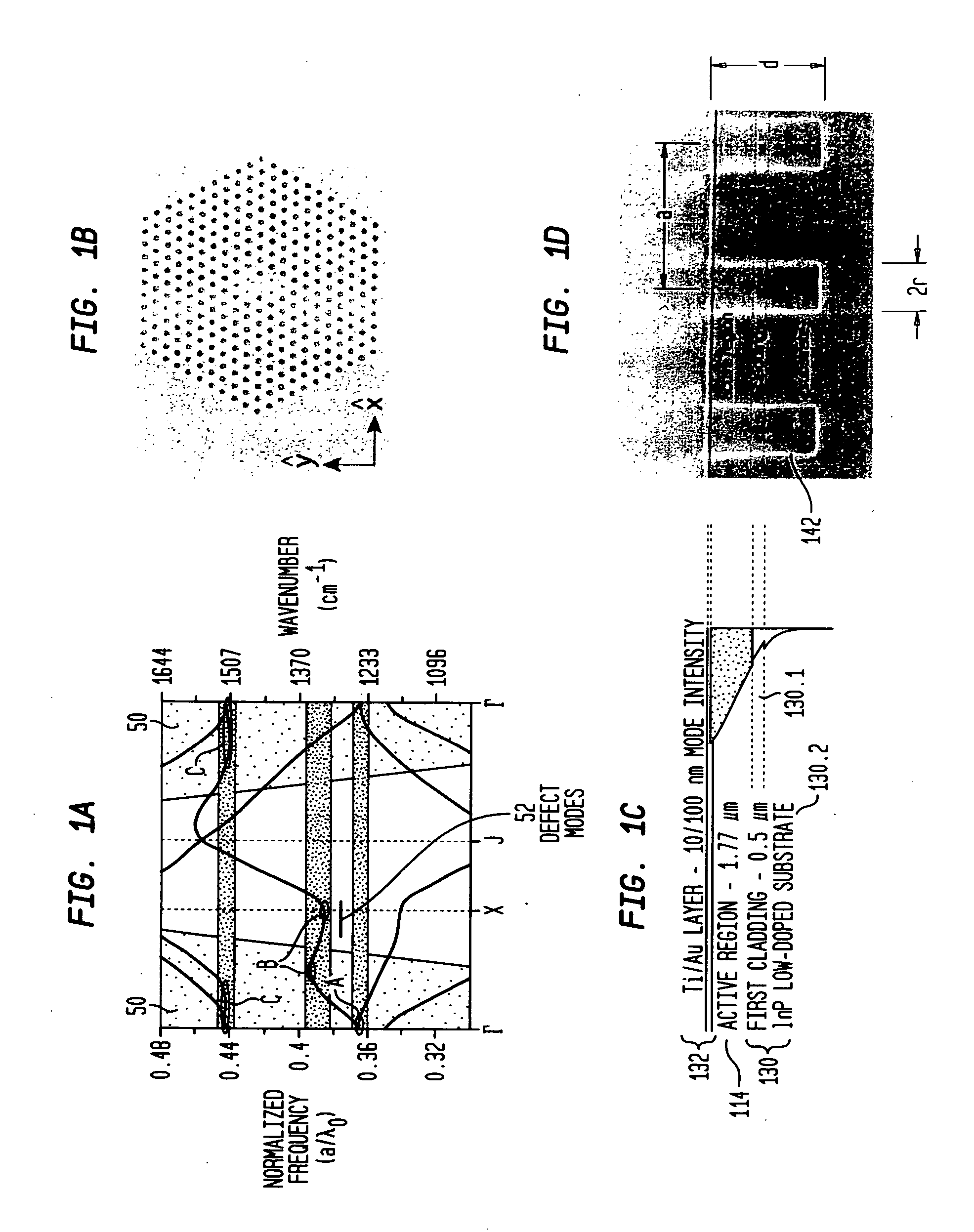Unipolar, intraband optoelectronic transducers with micro-cavity resonators
an optoelectronic transducer and micro-cavity technology, applied in the direction of optical resonator shape and construction, semiconductor laser arrangement, semiconductor laser, etc., can solve the problems of large device size, inefficient detector of vertical illumination, and design that does not address the large size of the device, so as to achieve a much wider potential impact
- Summary
- Abstract
- Description
- Claims
- Application Information
AI Technical Summary
Benefits of technology
Problems solved by technology
Method used
Image
Examples
example
ISB Laser
[0065] This example describes Group III-V compound semiconductor surface-emitting ISB lasers of both the band-edge variety and the defect-mode variety. (Note, the defect-mode device lased on band-edge states, which are also allowed modes in such lasers.) Various materials, dimensions and operating conditions are provided by way of illustration only and, unless otherwise expressly stated, are not intended to limit the scope of the invention.
[0066] In this example, the micro-cavity resonator was formed by etching essentially equally spaced air holes that penetrated through the core region and extend deep into the lower waveguide cladding. The deep holes, which had a relatively high aspect ratio (d / 2r˜2.5-3.0) were arranged in a hexagonal pattern, altered the photonic density of states in the lower semiconductor cladding, providing efficient vertical optical confinement. [See, B. D'Urso et al, J. Opt. Soc. Am. B, Vol. 15, p. 1155 (1998)], which is incorporated herein by refe...
PUM
 Login to View More
Login to View More Abstract
Description
Claims
Application Information
 Login to View More
Login to View More - R&D
- Intellectual Property
- Life Sciences
- Materials
- Tech Scout
- Unparalleled Data Quality
- Higher Quality Content
- 60% Fewer Hallucinations
Browse by: Latest US Patents, China's latest patents, Technical Efficacy Thesaurus, Application Domain, Technology Topic, Popular Technical Reports.
© 2025 PatSnap. All rights reserved.Legal|Privacy policy|Modern Slavery Act Transparency Statement|Sitemap|About US| Contact US: help@patsnap.com



